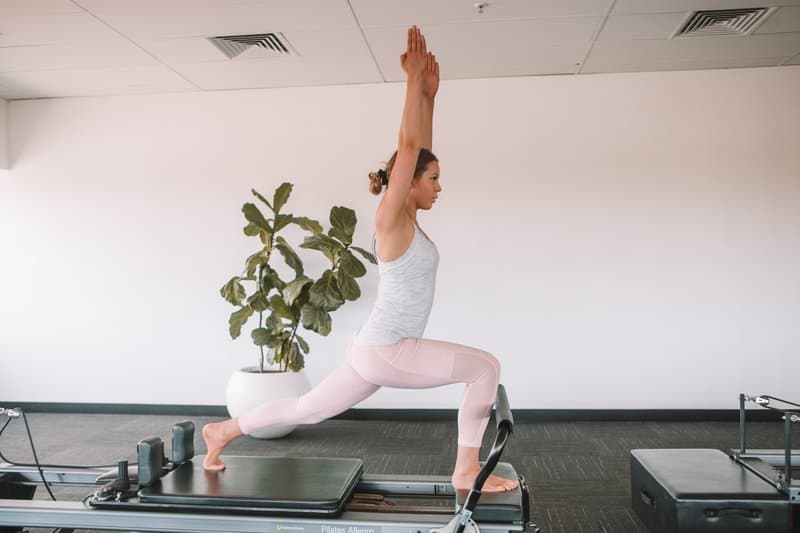More often than we think, our body is in the wrong position (referred to as poor posture), and that can cause some major health problems.
Posture refers to the way we hold our bodies while standing, sitting, or moving – and it plays a critical role in musculoskeletal and nervous system health. When posture is compromised, it disrupts spinal alignment and adds strain to muscles, joints, and nerves.
Beyond making us look less than our best and causing us issues like back pain or headaches, poor posture can lead to many chronic and lasting health issues. Chronic fatigue, herniated discs and compromised physical performance can all result from poor posture maintained over the years.
Since the nervous system travels through the spine, incorrect posture can impair neural communication between the brain and body. This is why chiropractors emphasize spinal alignment – not only to relieve symptoms, but to restore function.
Establishing better posture habits requires daily attention and conscious correction. Like any lasting lifestyle change, learning how to have good posture involves small, repeatable actions over time.
There are many causes of poor posture. Here are a few:
Common Causes of Poor Posture:
- Carrying Excess Body Weight
- Lack of Muscle Tone
- Sitting for Extended Periods of Time
- Using Poor Form When Walking or Exercising
- Prolonged Use of Electronic Devices
- Sleeping or Lying Down in the Wrong Position
- Unbalanced loads like purses or backpacks
Good posture keeps the body aligned and stable with the least possible expenditure of energy. To achieve this, it is important that the spine is kept without any lateral (side-to-side) deviation and that it does not curl up or down in the wrong places.
Luckily, there are methods to help you enhance your posture right now.
Some of these will have an immediate effect. Others may take longer to show results but rest assured, improving your posture is one of the best things you can do for your health.
Using Exercise to Help Improve Posture
To maintain a correct posture it is important that we become aware of how we’re already holding our bodies.
We also need to understand that just because we’re not in pain, that doesn’t mean our bodies are aligned properly. Sometimes we get so used to our normal ways of movement that we lose the ability to tell when they are off.

Certain disciplines such as Pilates and Yoga help us to become aware of each part of our own body, to help them function both independently and globally. Yoga and Pilates help improve your posture by building strength and awareness, and encouraging better breathing and muscle control.
Body alignment is one of the basic principles of Pilates and Yoga, which is why we sometimes recommend those forms of exercise to help improve posture.
Building strength in your core muscles and supporting your spine through mobility work helps reinforce proper posture throughout the day. Exercises such as planks, bird-dogs, and bridges help activate and stabilize the spine.
Incorporating dynamic posture drills – like walking lunges or resistance band pulls – along with static posture holds can train your body to transition between movements with ease.
Muscle toning is also highly important when maintaining good posture. Strong muscles, dense bones and joints with a good range of motion will make us more effective and efficient in our day-to-day movements.
If you choose to do other activities like Spin classes where you maintain the same position for a long period of time, make sure to pay attention to all instructions about correct posture.
In some cases, chiropractic-guided rehab or posture correction therapy may be recommended in combination with exercise to address muscular imbalances or joint restrictions. Working with a physical therapist trained in physical medicine or sports medicine can help reinforce alignment as well as the benefits of good posture.
How to make good posture a habit
As with most things in life, we should start step-by-step, not rushing things or expecting huge results right away.
It takes time to adjust our body into having good posture. Therefore, the best thing to do is to begin with small steps and incorporate them slowly into your daily routine.
This habit-building process may include setting hourly reminders to check your sitting posture or placing sticky notes near your desk that cue you to realign your neck and shoulders.
To build sustainable changes, focus on one goal at a time – such as keeping your shoulder blades back or checking that your hips are balanced while walking.
Practicing mindfulness and observing your dynamic posture throughout the day – during driving, working, or exercising – can help you stay aware of changes that need attention.
One thing to keep in mind for how to have good posture is to use visual cues and tactile feedback, such as posture-correcting braces or ergonomic chairs, to build awareness.
If you’ve been dealing with bad posture for years, remember that the body needs time to unlearn static posture patterns and retrain toward better movement.
Below are 9 simple tips and exercises that will help you achieve success as quickly as possible.
9 Simple Tips and Exercises to Improve Your Posture
Improve your flexibility
Flexibility is essential for good health and there are many, many daily routines to help improve yours. For now, these first two exercises work directly on your posture and are a simple way to get started:
Exercise #1
Put both hands, palms out and arms bent, behind your back. Take one hand and hold your opposite wrist. Stretch gently and try to bring your shoulder blades together. Hold for 30 seconds and release. Repeat 5-10 times a day and you will begin to feel the tension ease off over time.
Exercise #2
Place your back against a wall with your arms out to your sides, elbows bent and fingers pointing toward the ceiling. Push your head against the wall, squeeze your shoulder blades together and move your arms up and down 10 times while keeping the rest of your body still.
Exercise #3
Sit cross-legged on the floor or in a chair, then slowly tilt your head to one side, bringing your ear toward your shoulder. Hold for 20–30 seconds and repeat on the other side. This neck stretch helps release tension and encourages better spinal alignment. Perform this stretch 2–3 times per side, 5 days a week.
If you want a video demonstration of this exercise, our own Dr. Scott Cruse has an excellent video on our Instagram page here: Wall Angels Demo Video
Align your spine at night
Believe it or not, the way you sleep can also influence the way you sit and stand when you’re awake. Your sleeping posture directly affects spinal alignment, and supporting the spine properly at night can promote healthier movement patterns throughout the day.
An easy way to keep your spine straight is to place a firm pillow between your knees when you’re lying sideways. This takes the extra pressure off your spine and keeps it from twisting asymmetrically. If you prefer to sleep on your back, try placing a pillow under your knees to support the natural curve of your lower spine.
Choose a mattress that supports your body without sagging – medium-firm memory foam or hybrid models with ergonomic support are often ideal. Pair it with a supportive pillow that holds your head and neck in neutral alignment. Avoid overly thick or thin pillows that push the neck forward or to the side.
The best position for sleeping well is sideways and with your legs slightly tucked up. This position helps to keep the spine aligned and facilitates ease of breathing, thus helping to reduce snoring.
This video from Dr. Casey McGuire at our McHenry, IL location walks you through this process step by step:
Adjust your wardrobe
Do you wear heels to work every day or other uncomfortable footwear?
Wearing high heels forces you to lean your body forward which, in turn, can cause you to slouch. If you can, try not to wear heels higher than 7 cm. Along with shoes, book bags, purses, and other things many people wear all day, wardrobe can seriously impair your posture.
Also, carrying a heavy bag every day can add a lot of strain to your shoulders, forcing you to roll them forward.
Try switching to a bag with a strap that you can position across your body (or at least empty excess items from your bag to make it as light as possible). If you’re using a backpack, wear both straps and keep it positioned high on your back to promote balance and reduce uneven pressure on the spine.
Small choices in wardrobe and accessories can go a long way toward protecting your alignment without sacrificing function or style.
Make changes to your work environment
Many people spend a lot of their time bent over a desk and rarely get up during the day. Since you can’t always get up or incorporate active movements, try making small adjustments to relieve stress.
Standing desks are becoming more common in the workplace. There are even adjustable desks so you can switch from sitting to standing and vice versa. These allow you to alternate between sitting and standing throughout the day, supporting better spinal alignment and reducing fatigue. Pair this with an ergonomic chair that supports the natural curve of your spine and keeps your knees level with your hips.
Monitor height and keyboard placement also matter: your screen should be at eye level, and your elbows should form a 90-degree angle when typing. A posture-correcting chair, a footrest, or even a lumbar cushion can also help relieve pressure on the lower back during long work sessions.
Lastly, make a habit of stepping away from your desk every 1 to 2 hours. Even a 5-minute walk around the office can help reset your posture and reduce physical strain over time.

Looking in the Mirror
It is very helpful to stand in front of a full-length mirror while correcting your posture. You should distribute your weight evenly on both feet, throwing your shoulders back so they remain level.
Want to see if you’re in proper alignment? Stand with the side of your body facing the mirror and try to draw an imaginary straight line down from the back of your ear, over your shoulder, behind your hip and knee, and down to your ankle. Visual alignment cues such as level shoulders, aligned ears, and neutral hips can help reinforce what correct posture feels and looks like.
For even better progress tracking, take weekly posture photos from the front, side, and back to visually compare any improvements.
Work on Your Sitting Posture
Check that your back is straight, your shoulders are back and down and the soles of your feet are flat on the floor. Studies indicate poor posture while sitting can lead to chronic health issues including low back pain, reduced lung capacity, and circulatory problems.
To support proper sitting posture, use a lumbar roll or a firm cushion to maintain the natural curve of your lower back. Keep your screen at eye level and your elbows bent at about 90 degrees to reduce muscle tension in your neck and shoulders.
Remember that it is not good to cross your legs for a long time, as this can obstruct circulation and cause swollen legs or varicose veins. Use sticky note reminders or posture apps to help you stay mindful of your seated position. This can be especially helpful for remote workers spending long hours on laptops.
Do This When You Are Standing

The weight of the body should be distributed between the two legs and the knees should be slightly bent. Avoid locking your knees or wearing high heels for prolonged periods, as both can negatively affect your standing posture and throw off your balance.
Remember what we said in the Mirror tip about being able to draw a line down the side of your body – from your ear through your shoulder, hip, and ankle. This vertical alignment is the foundation of proper posture when standing.
Walking With Better Posture
As we walk, we must also take care of our posture. Your head should stay up, with your neck extended naturally and your gaze forward – not down. It helps to imagine your head is suspended from a string attached to the ceiling directly above you.
Along those lines, avoid looking at the floor too long, as this can cause neck pain. Also, try to step with the heel of your foot first and then move to the toe. As you walk heel-to-toe with each step, it can promote smoother movement and improve overall balance. Keep your shoulder blades relaxed but pulled slightly back, and avoid slouching forward.
Common mistakes like looking down at your phone – also known as “tech neck” – can strain the spine. You should consider limiting screen time while walking and take short daily walks with intentional posture cues to improve your posture over time.
The Miracle of Regular Exercising
Exercises are key to stretching, strengthening and loosening muscles, which will keep them in optimal condition. This is obviously important for maintaining good posture.
There are many types of exercise you can engage in and it’s best to choose something you enjoy so it will be easier to stay consistent.
As we mentioned before, many people find Yoga and Pilates helpful for improving posture but you are welcome to try other methods. The most important thing is for you to get in at least some active movement every single day.
It’s not necessary to overdo it. The CDC recommends a basic movement goal of 150 minutes of moderate activity per week, which breaks down to just 30 minutes a day, five days a week. Find something you enjoy so the habit sticks, and prioritize variety to target all areas involved in static posture and dynamic posture alike.
Posture and Mental Health
Your posture isn’t just about your back – it also affects your brain.
Multiple studies have shown that maintaining an upright posture can positively influence mood, energy levels, and even resilience to stress. Slouching or collapsing forward – especially during long days – can compound feelings of fatigue or anxiety.
Standing tall with open shoulders promotes the kind of confident body language that boosts self-esteem and projects strength. Over time, these small changes in posture awareness may reduce feelings of helplessness and improve emotional balance.
So, if you’re wondering how to have good posture and better mental health, start by sitting tall, breathing deeply, and lifting your chest – it’s one of the simplest changes you can make today.
Which of these Posture Tips Will You Use First?
Maintaining good posture helps you walk, sit, stand, dance or whatever else you find yourself doing on a daily basis with greater ease. You will learn to use body positions that put less pressure on the muscles and ligaments during movement and when carrying weight.
You will likely also notice an effect on your self-esteem because good posture helps you to look and feel your best.
By adopting one or two of these good posture habits to start and incorporating more of them into our lives, we can prevent unnecessary injuries and pain, and improve our quality of life and health.
All it takes is one small change to get started. Maybe it’s setting a reminder to check your sitting posture at work. Maybe it’s walking with your head up instead of scrolling your phone. Maybe it’s switching to supportive shoes or pursuing physical therapy to address an underlying issue.
Whatever you choose, you don’t have to do it all at once. Consistency, not perfection, is what creates lasting change.
Enjoy!
Need help putting these habits into motion? Has it been more than two weeks since your last adjustment? It might be time to reconnect with your local chiropractor.
Call your nearest Evolve Chiropractor to set up an appointment today.
(Featured image by Rodolfo Quirós from Pexels)





